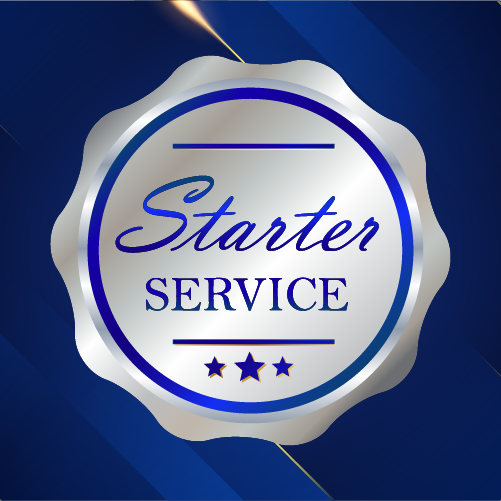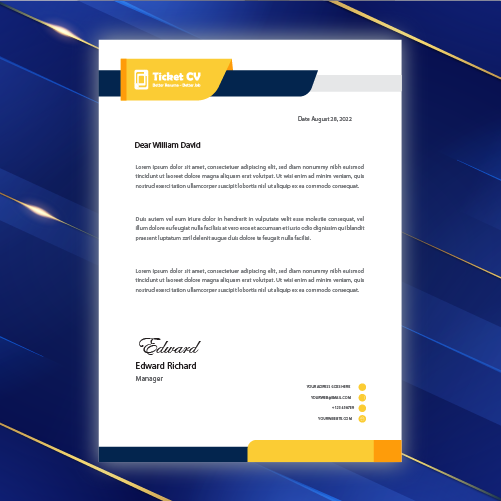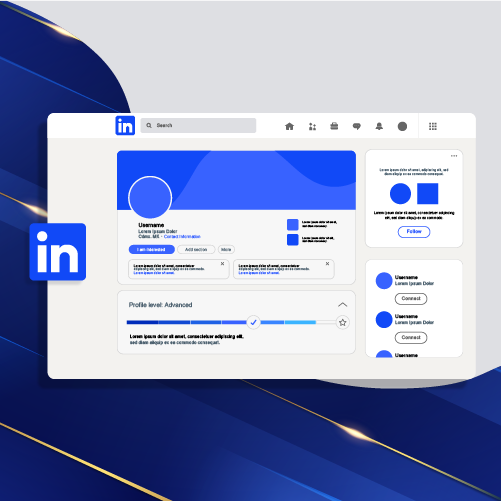We understand the significance of internal career growth for our employees and the benefits of pursuing higher positions within our organization. Our managers are committed to creating job openings for our employees. It allows us to showcase our talent, align with the company culture, and position ourselves for internal jobs or interviews. By competing for internal job opportunities, employees demonstrate their interest in contributing to different departments while building a cohesive team. This also helps companies identify suitable candidates for various roles within the organization. This approach not only saves time but also emphasizes our fit within the organization, fostering a storytelling way of showcasing our TicketCV talent and dedication to our work. It helps in identifying the right employees for an internal position and strengthens the employer’s interview process.
Contents
ToggleUnderstanding the Internal Job Application Landscape
Recognizing the Benefits of Internal Mobility
Understanding company culture and values is crucial for internal employees applying for a new job, as it enables them to leverage their existing knowledge of the organization and potentially gain an edge over external applicants. This understanding can also help in navigating relationships with the boss and manager. Moreover, the opportunity for professional growth within an internal job familiar environment allows employees to seamlessly integrate into new roles while already understanding the company’s operations and procedures.
Evaluating Genuine Reasons for Upward Movement
Internal applicants should assess their personal career goals and aspirations before applying for a higher position within the same company. Identifying specific skills and experiences needed for an internal job advancement is essential, ensuring that they align with both personal ambitions and organizational requirements. Evaluating the potential impact of an internal job on work-life balance is vital to make informed decisions about pursuing upward mobility.
Aligning Skills with New Position Requirements
Matching current skills with job requirements is pivotal in showcasing suitability for an internal position. Internal applicants must also identify areas for skill development or improvement to bridge any gaps between their existing competencies and those required for the new role. Furthermore, highlighting transferable skills from their current role can demonstrate versatility and adaptability, making them more competitive candidates for an internal job.
Strategizing Your Application Approach
Crafting Your Internal Resume
Crafting an internal resume involves highlighting relevant skills and experiences from the current position. Emphasize qualifications and achievements within the company, tailoring the resume to showcase how talents align with the new job requirements.
Tailoring Resume for the Role
Customizing a resume to emphasize relevant experiences is crucial when applying for a higher position within the same company. Showcasing achievements within the company and aligning qualifications with the job description can significantly enhance candidacy. Utilizing TicketCV to highlight accomplishments and match skills with the job requirements can also boost chances.
Demonstrating Mutual Benefits
Emphasizing how both you and the company will benefit from your promotion is essential. Highlight contributions to the team and organization while illustrating commitment to long-term success.
Personalizing Your Cover Letter
Personalization of a cover letter involves highlighting specific skills and qualifications, expressing genuine interest in the new job opening within the company, and emphasizing how you are a perfect fit for the position.
Direct Address to Hiring Manager
Directly addressing the hiring manager in your cover letter can set you apart. Personalized communication expressing interest in the specific role and department, along with a request for an opportunity to discuss further, can demonstrate proactive engagement.

Expressing Clear Intent and Enthusiasm
Conveying genuine passion for the new role, clearly stating desire for upward mobility within our company, and expressing eagerness to contribute at a higher level are key elements that should be reflected in your application approach.
Navigating Interpersonal Dynamics
Transparency with Current Supervisor
Maintaining open communication with the current supervisor is essential when considering a higher position within the same company. Sharing career aspirations and seeking guidance can demonstrate a proactive approach to career development. It’s crucial to discuss the potential impact on current team responsibilities, ensuring a smooth transition if the application progresses.
Managing Perceptions and Workplace Optics
Throughout the application process, professionalism should be upheld to address any concerns about loyalty or commitment to the current role. This ensures that colleagues perceive the move positively, fostering an environment of support and understanding for professional growth within the company.
Dealing with Potential Negative Notions
Addressing any doubts about readiness for a higher position is vital. Proactively dispelling misconceptions about motivations for upward movement by highlighting positive contributions made in the current role can help alleviate concerns and showcase preparedness for advancement.
When applying for a higher position within the same company, maintaining transparency with one’s supervisor is crucial. According to a survey by LinkedIn, 85% of employees consider it important to have an open and honest relationship with their direct manager regarding career aspirations. Studies show that 70% of internal hires outperform external candidates in various roles, emphasizing the value of internal promotions.
Leveraging Professional Networks in the Company
Seeking Internal References for Support
When applying for a higher position within the same company, it’s essential to seek internal references for support. Requesting endorsements from colleagues or mentors who are familiar with your work performance can significantly bolster your application. Gathering these recommendations from individuals within the organization can enhance your credibility and increase your chances of securing the new role.
Building New Connections for Future Opportunities
Expanding your professional network within different departments is crucial when aiming for a higher position internally. Engaging with employees in the target department not only provides insights into the role but also helps establish rapport with potential future colleagues. By building new connections, you broaden your understanding of available positions and create opportunities to showcase your skills and qualifications to relevant decision-makers.
The Application Submission Process
Ensuring Suitable Compensation Discussions
When applying for a higher position within the same company, it’s crucial to prepare for salary discussions. This involves researching industry standards and internal pay scales to ensure fair compensation. Being open to negotiation while considering internal equity is essential in this process.
Preparing for the Internal Interview
To prepare for an internal interview, updating one’s CV with relevant skills and qualifications is vital. Researching the new job requirements and aligning experience accordingly can significantly strengthen candidacy. Seeking feedback from the current supervisor can also provide valuable insights.

Communicating Effectively During the Interview
During the interview, practicing effective verbal and non-verbal communication skills, as well as showcasing a strong CV, is key. Articulating past accomplishments and future goals clearly demonstrates competence. Demonstrating enthusiasm and confidence during discussions can leave a positive impression on the hiring supervisor.
Maintaining Positivity and Professionalism
Approaching interactions with a positive attitude is important when vying for a higher position internally. Handling challenges or setbacks gracefully showcases resilience and adaptability. Upholding professional conduct at all times reinforces one’s suitability for the new role.
After the Application: What Comes Next?
Navigating Post-Submission Procedures
After submitting application materials, it’s crucial to follow up appropriately. This may involve sending a thank-you email to express gratitude for the opportunity. Patience is key during the review process, as internal applicants might have to wait longer for decisions due to additional considerations.
Handling Rejection with Grace
It’s essential to accept rejection as part of career growth and seek feedback for self-improvement. Maintaining professionalism despite disappointment can leave a positive impression, potentially opening doors for future opportunities within the company.
Expressing Gratitude Regardless of Outcome
Thanking individuals involved in the application process shows appreciation for consideration, regardless of result. This not only leaves a positive impression but also demonstrates maturity and professionalism.
Best Practices for applying for a Higher Position Within the Same Company
Effective Communication with Supervisors
It’s important to keep supervisors informed about your application progress to show transparency and professionalism. Getting guidance on balancing current performance with advancement can help navigate this transition effectively. Respectful communication about potential role changes demonstrates willingness to adapt and grow within the company.

Securing Strong Internal References
Leveraging strong relationships built within the company can significantly boost our chances. Gathering compelling endorsements from respected colleagues adds credibility to our application.
Establishing a network of reputable internal references showcases our commitment and competence, setting us apart from other applicants.
Continual Professional Development Within Company
Actively pursuing ongoing training opportunities within the organization is key. It not only enhances our skills but also demonstrates our dedication to personal growth and improvement.
Taking advantage of internal resources for professional development allows us to stay competitive and well-prepared for new job opportunities within the company.
Conclusion
In navigating the internal job application landscape, we’ve uncovered valuable insights into strategizing our approach, managing interpersonal dynamics, leveraging professional networks, and optimizing the application submission process. As we consider what comes next and the best practices for increasing success chances, it’s clear that our preparedness and proactive mindset will significantly impact our journey toward a higher position within the company.
Let’s continue to support each other, share our experiences, and stay informed about new opportunities. By staying engaged and committed to our professional growth, we can navigate this process with confidence and determination. Our collective efforts will not only benefit us individually but also contribute to a thriving and supportive internal community.
Frequently Asked Questions
How can I prepare for applying for a higher position within the same company?
To prepare for applying for a higher position within the same company, it’s crucial to assess your skills and qualifications, research the role thoroughly, and tailor your application to highlight relevant experiences and achievements.
What should I consider when navigating interpersonal dynamics during the internal job application process?
When navigating interpersonal dynamics during the internal job application process, it’s important to maintain professionalism, communicate openly with colleagues, seek feedback from mentors or supervisors, and demonstrate respect towards all individuals involved in the process.
How can I leverage professional networks within the company to support my application?
Leverage professional networks within the company by seeking guidance from mentors or senior colleagues, expressing interest in the role to relevant stakeholders, and demonstrating proactive engagement in cross-departmental initiatives that showcase your capabilities.
What are some best practices for increasing success chances when applying for a higher position internally?
Some best practices include showcasing a strong track record of performance, aligning with company values and goals, actively seeking feedback on areas of improvement, and demonstrating a genuine commitment to personal and professional growth within the organization.
After submitting an internal job application, what are the next steps?
After submitting an internal job application, it’s advisable to maintain regular communication with relevant stakeholders while respecting their time. Continue performing effectively in your current role and be prepared to participate in any subsequent assessment processes or interviews.











